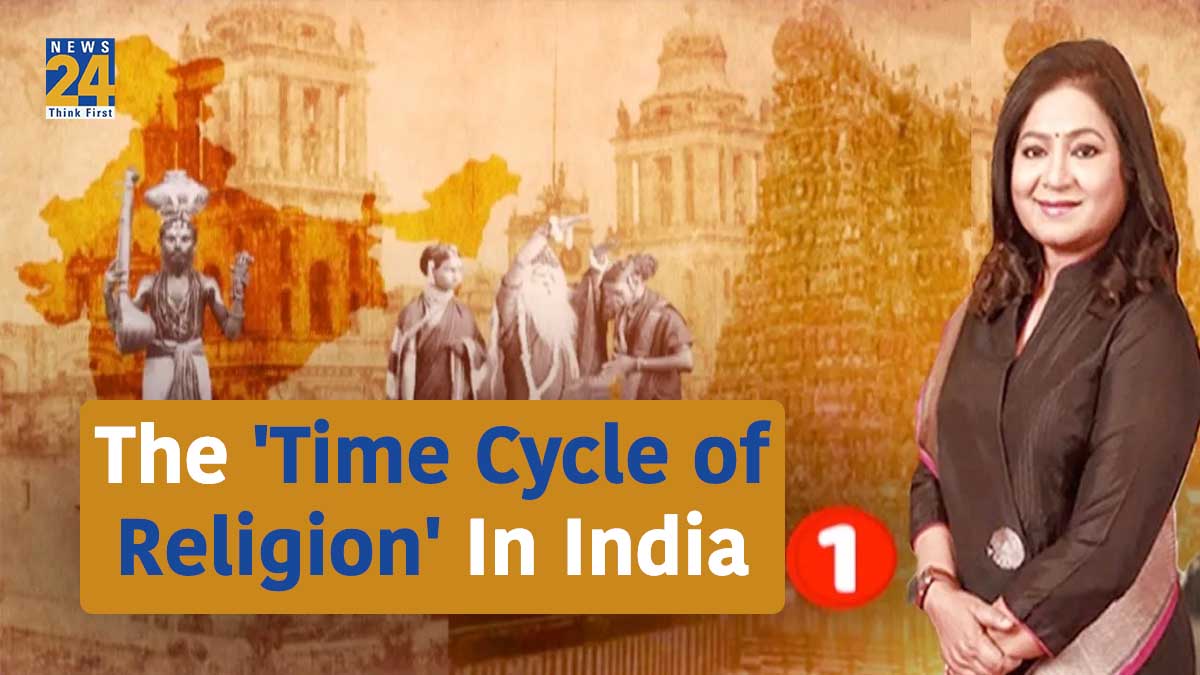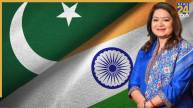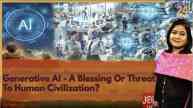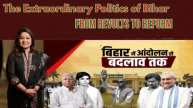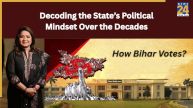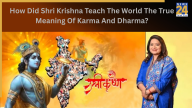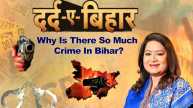– Anurradha Prasad
(CMD and Editor-in-Chief, News24)
Bharat Ek Soch: What kind of thinking finally took root in the soil of India, where it became a habit to see the betterment of all living beings, including trees, animals, and humans?
What kind of belief is this, in which Lord Shiva is worshipped on the shores of Rameshwaram in the southern part of India, and in the north, amidst the lofty Himalayan mountains, in the Amarnath Cave? What kind of faith is it in which Lord Shri Krishna is worshipped in the western city of Dwarka and in the far eastern corner of Imphal Valley? What kind of thinking transformed Lord Rama into a hero of the Indian populace, with everyone seeing their well-being in following his path? What is the ideology that has sprouted in the soil of India, where it has become a habit to envision the betterment of all existence, whether it be rivers, trees, animals, or humans? A belief system where rivers are revered, miraculous events are observed in sun salutations, and the Earth is considered a mother. Even in trees, the presence of the Divine is acknowledged. A way of thinking that has gained prominence worldwide in recent decades as environmental concerns are addressed.
Environmentalists express their concern, but it was the sages and seers of India who understood this thousands of years ago. The Vedas and Puranas bear testimony to the fact that in India, religion is not just a form of worship; it has always been an advanced philosophy for guiding and advancing human society. From Vedic times to the present day, the essence of religion has evolved in tandem with the wheel of time, at times playing the role of a disciplinarian in society, at other times spreading the light of knowledge like a torch, sometimes mending the fraying threads of relationships in society, at other times serving as a charioteer, eliminating indifference in people’s lives. It has also taken the form of a source of power, uniting people against foreign forces and sometimes playing the role of fuel in the engine of vote bank politics. India has decided to introduce the various, ever-evolving thoughts that have occasionally taken shape in the country, leaving a deep imprint on the nation, its era, and society. The first in this series is the ‘Time Cycle of Religion’.
Right and Wrong changed as per the conditions:
A significant portion of India, home to a population of over a billion and forty million, has a deep-rooted religious inclination. The tradition of starting the day by worshipping one’s deity has persisted for centuries. For most, there is a constant belief that if one commits wrong, a divine retribution awaits. Helping others is considered virtuous while wronging them is seen as sinful. Ultimately, where did the concept of sin and virtue in the Indian psyche originate? What philosophy underpins this concept of sin and virtue? How do notions of right and wrong adapt to the country, time, and circumstances?
What led to the emergence of such thinking in society? What does religion mean for the common Indian? During religious rituals, the recitation of a particular mantra often resonates with “Jambu Dweep Bharatkhande Aryavarte deshantargate.” What significance does Jambu Dweep hold in this mantra, and how does it relate to the present-day map of India? Was Jambu Dweep larger or smaller compared to today’s India? What distinguishes Jambudweep, Bharatvarsha, and Aryavarta?
The Earth began to split into continents with seismic activity:
The Earth began to split into continents, much like how the Rigveda mentions the origin of life. The composition of the Rigveda is believed to date back almost three and a half thousand years. Science also acknowledges that once all continents were interconnected. Over time, due to significant geological shifts, Earth’s landmasses started to separate. People eventually settled after crossing the lower part of the Himalayas, known as Aryavarta, and they were referred to as Aryans. Over the course of thousands of years and several changes, the current map of the world is now before us. Jambu Dweep, Bharatvarsha, and Aryavarta are often mentioned. Now, the question arises, are these merely different names for the same part of the Earth, or have their boundaries evolved over time? Was the map of Jambu Dweep larger or smaller compared to the present-day Indian map? How does Aryavarta correspond to today’s Indian boundaries?
A perspective that unifies:
Jambu Dweep, smaller than Bharatvarsha, holds a profound connection within the context of Aryavarta and Hindu religious rituals during the recitation of the mantra. It signifies a deep-seated attachment to Bharatvarsha, Aryavarta, and the ritual of sankalpa. A viewpoint that envisions the entire world as one and perceives oneself as a part of it. The wheel of time continues to advance, and borders change. Although borders may be redefined with time, history and geography reveal that the most favourable climate and living conditions were prevalent in Jambu Dweep, the place where, at one point, several nations, now visible on the global map, were encompassed.
A Journey of Millennia:
In the Vedas, India is referred to as Aryavarta, the dwelling place of Aryans. In ancient times, the Aryan settlement extended from the Kumbha River in present-day Afghanistan to the banks of the Ganges in India. The regions settled by Aryans, as mentioned in the Rigveda, were called the ‘Saptsindhu region’, where the remarkable story of human civilization’s development and expansion took place. People learned to live in society and there existed a mantra of progress for all. The authorship of the Vedas, the time of their creation, remains a matter of conjecture.
However, the Vedas stand as a profound and practical testament, shaping the destiny of humanity for thousands of years. From the inception of the Brahman to advancing the life of an ordinary person, they conceal a vision to weave karma into dharma, allowing for the conscious and subconscious roles of both to nurture the operation of the universe and the progress of society. According to the Rigveda, creation sprang from Hiranyagarbha, and its journey spans countless eons. Subsequently, a way of life emerged from its essence, known as Sanatana Dharma. It is this Sanatana Dharma that gradually evolved into Hinduism, connecting India. Some scholars argue that it is not just a religion but a nation unto itself. The question arises: is Hinduism enough to unify India into one thread?
Linking Dharma with Karma in the Bhagavad Gita:
As the wheel of time progressed, dharma took on different interpretations. The Atharvaveda used the term ‘dharma’ for religious rituals. However, in the Bhagavad Gita, dharma is intertwined with karma, providing a means to connect people and regulate their lives. The Mahabharata teaches that non-violence is the ultimate dharma, while the Manusmriti emphasizes that conduct is the ultimate dharma. Through the ancient ashram system of India, every individual was attempted to be tied to the thread of dharma, thus ensuring the right karma. The philosophy in India is so comprehensive and subtle, involving individuals in mental, physical, and spiritual balance through practices like yoga, meditation, and pranayama. The conception of “May all be happy” and “I am Brahman” are a vision ahead of modern Western ideals of freedom, equality, and fraternity, as well as human rights and peaceful coexistence. The Bharatiya Samaj (Indian society) has harboured these thoughts for thousands of years. As the wheel of time progressed, Adi Shankaracharya tried to establish the unity of India by founding four dhams (spiritual centres) to connect Kanyakumari to Kashmir. His movement was not against any religion.
Inclusive Thought Perplexed the English:
When the British arrived in India, they were astonished by the intricacies of Indian religion. The concept of karma and dharma cemented the societal structure. In India, some Hindu kings even raised the religious banner with their swords to unite people against Muslim rulers. The British realized India’s power and used a divisive ideology to conquer and rule. They employed a sinister strategy that pitted religion against religion, thus dividing society based on religious customs and practices. India where Hindus and Muslims fought together against the British in 1857 was divided by the British into a land where religion was used as the basis for partition.

